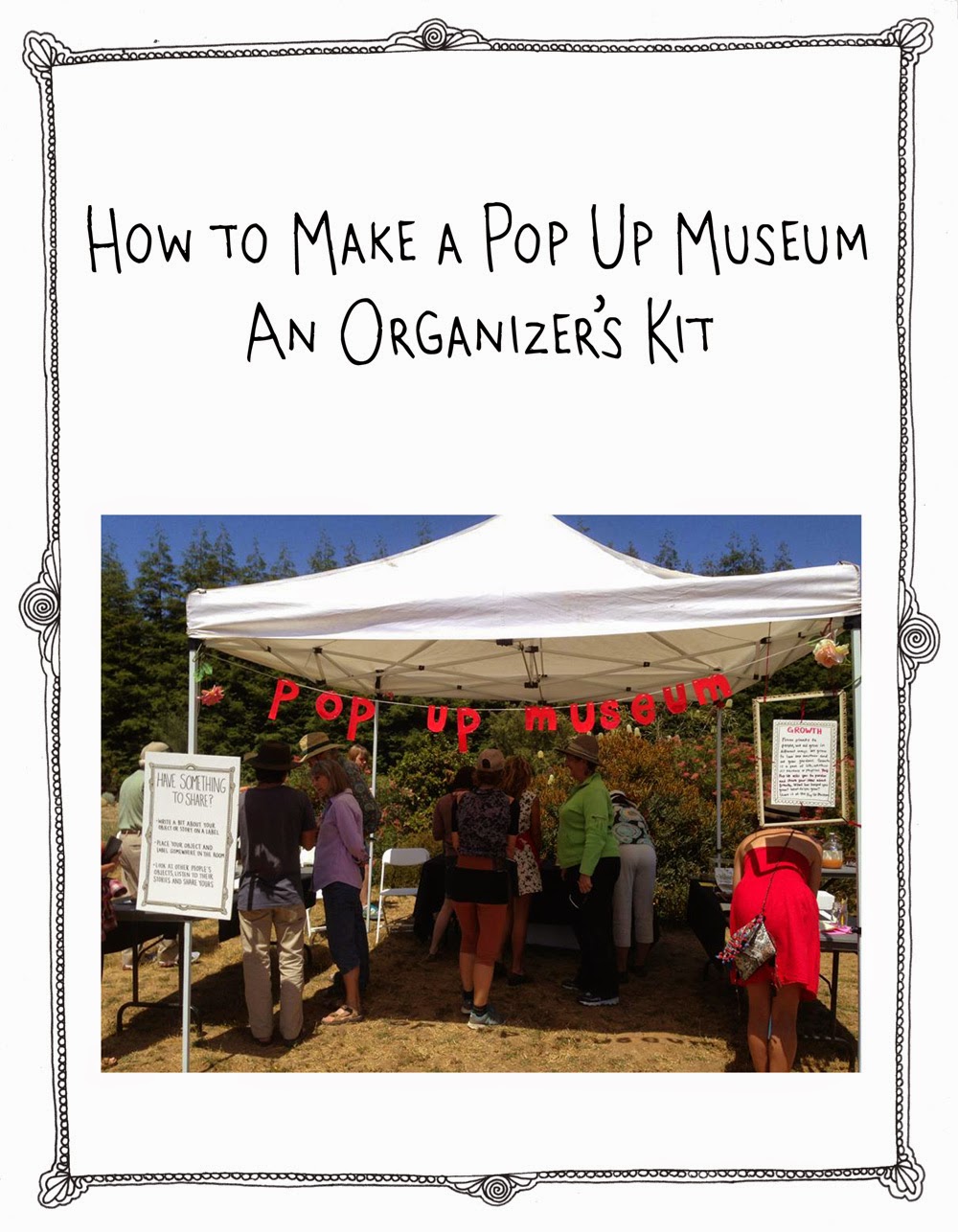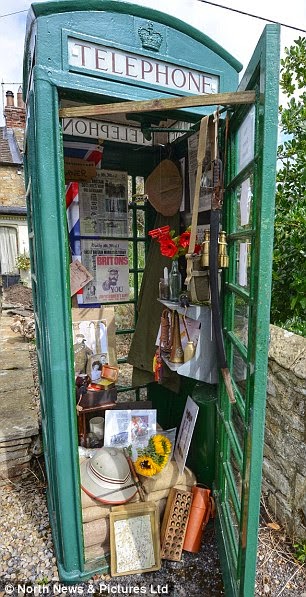I once imagined fixing up
a simple outbuilding, no bigger than 15’x15’, where I could bring together
small, personal exhibits simply for the enjoyment of gathering and organizing lovely,
unusual, treasured, or found objects. I could sense the pleasure of being
absorbed in finding ideas from objects collected on walks over years and years,
bringing out old fabric buried in family trunks, revisiting my childhood rock
collection, or showcasing friends’ artwork.
In my mind’s eye, I could picture exhibits I put together, ones co-curated with my sisters or my book group, or something friends guest curated. Exhibits might be inspired by beach glass from Lake Michigan beaches, pottery from the coast of Wales, or polished marble chips from the Cinque Terra; 25 years of books read by our book group; or the Vergeront sisters’ childhood. Collections sitting on shelves and in cupboards might inspire exhibits: hand-carved horses, miniature tops, boxes, buttons, marbles, keys, snow globes, tiny books, or old Valentines and the rubber stamps that made them. All of these could find their way into an exhibit for an admittedly small audience of family, neighbors, friends, friends-of-friends, or new friends walking through the alley or driving a country road.
In my mind’s eye, I could picture exhibits I put together, ones co-curated with my sisters or my book group, or something friends guest curated. Exhibits might be inspired by beach glass from Lake Michigan beaches, pottery from the coast of Wales, or polished marble chips from the Cinque Terra; 25 years of books read by our book group; or the Vergeront sisters’ childhood. Collections sitting on shelves and in cupboards might inspire exhibits: hand-carved horses, miniature tops, boxes, buttons, marbles, keys, snow globes, tiny books, or old Valentines and the rubber stamps that made them. All of these could find their way into an exhibit for an admittedly small audience of family, neighbors, friends, friends-of-friends, or new friends walking through the alley or driving a country road.
It doesn’t matter that
that I never found the outbuilding and never will create these imagined exhibits.
The homes and studios I enjoy the most are made more interesting with
imaginative exhibit-like arrangements. Family members have arranged collected
teacups, dolls, stamps, license plates, buttons, antique tools, and photos
according to their worldview and very likely change it to reflect a new outlook. In her hillside house, a textile artist has
created small shrines everywhere among the towers of stacked books. The amateur
naturalist has combined her most cherished finds from city walks and lake paths
in a delicate altar-like arrangement on a shelf where it catches the first
light. A friend told me that on every family vacation, each member selected a significant
object from the family’s time together. Year after year, vacation after
vacation, objects were collected in a large, lovely box. These objects invited
the family to revisit, reflect, and remember together. Domestic versions of
cabinets of curiosities enjoy pride of place on shelves, walls, windowsills,
and in corners of our homes, reminding us of interests, travels, places, loved
ones, and times past.
Evolving Cabinets of Curiosity
Evolving Cabinets of Curiosity
The penchant like the one that
inspired my dream of a simple space for presenting exhibits is not so different
from Cabinets of Curiosity of the past, museums of the present, and hundreds of
museum and exhibit experiments in between. Fueled by shared human and individual
curiosity as well as a tendency to collect, these inclinations are carried
forward by memory, a dialogue with objects, an interest in engaging and
delighting others, and the possibility of discovering something ourselves.
 |
| Santa Cruz Museum of Art and History Pop-up Museum |
Removing objects and exhibits
from the large-scale, familiar, and more formal museum context enables new
perspectives and opportunities for exhibits (and museums). A dance of personal
and public engagement is possible; expectations of what might happen shift; new
energy is released. The Pop-up Museum concept
described by Michelle DelCarlo on her blog
and carried further by the Santa Cruz Museum of Art and History and other museums plays with possibilities of community engagement,
conversation, development of ideas, format, and sense of place. A mobile museum
may be a strategy for a start-up museum without walls, for outreach to
underserved audiences and locations, or for a temporary set-up during a museum renovation.
Speakers at the recent ASTC 2014 Pecha Kucha responded to, “What if There Wasn’t a Building?” exploring the challenges, assets, and limitations of museum
buildings in serving new communities, welcoming diverse audiences, creating experiences,
experimenting with exhibit formats, and increasing participation.
Experimental Zibits
Experimental Zibits
Small, portable, temporary
exhibits–zibits–encountered in
unlikely places are an intriguing variation in the range of exhibits. Neither
mobile versions of museums nor temporary art installations, they lean towards
the personal. Whether these objects or collections are truly rare, valuable, or
historically significant matters less. Their meaning or personal value,
however, does matter. A zibit installation
might be powered by a playful, inventive, offbeat, or random idea; an enduring
question; a fragment of a story; or an obsessive devotion.
As
such they tend to be a somewhat of personal experiment carried out on a small
scale with a hint of intimacy. The person fashioning a small exhibit extends a personal
invitation to others, drawing them in to create moments of engagement. At the
same time it is intimate, a small exhibit becomes a larger gesture intended to enliven
a public space, spark conversations, or forge connections among strangers. On
the street; at the farmers’ market, the beach, or park; in a school, garage,
bike shop, or cargo container, a small exhibit is an unlikely encounter
with objects that dislodges an everyday moment from the routine. Out-of-context, expectations
shift and senses go on high alert. Idiosyncratic, rich in local color, and
often spontaneous, this just-for now, fleeting experience presented in a
compressed time frame for enjoyment rejiggers daily routines whether it is
getting to the library, making the walk light, or completing a transaction.Exhibits On the Street
 Personal, portable, pop-up
exhibits in unexpected places are likely to offer something idiosyncratic in an
Airstream Tradewind trailer; a mural on the wall at the State Fair; or in
repurposed street furniture such as a street kiosk or fire hose
box. Often both charming and provocative, small exhibits like those below hint at possibilities for local color, audience participation, and an experimental twist on engagement for "proper" museum exhibits.
Personal, portable, pop-up
exhibits in unexpected places are likely to offer something idiosyncratic in an
Airstream Tradewind trailer; a mural on the wall at the State Fair; or in
repurposed street furniture such as a street kiosk or fire hose
box. Often both charming and provocative, small exhibits like those below hint at possibilities for local color, audience participation, and an experimental twist on engagement for "proper" museum exhibits. • In downtown San Francisco a pair of vacant newspaper kiosks were repurposed as miniature street museums. Recognizable as permanent fixtures on the sidewalk, the kiosks can be flexibly programmed hosting exhibits on relevant topics with a twist. "A World View of Puppets" highlights puppets as natural street performers. With built-in lights and corresponding QR codes, the kiosks function as 24-hour museums.
• Visitors to Barnington in County Durham (UK) will find
 the smallest World War I museum in a
converted green British Telecom phone box. A retired villager was inspired to
create the compact exhibit to honor his grandfather and the 15 men from the
small village who fought and died in World War I. Renamed the Listening Post,
the villager and his wife collected and installed historic items, newspaper
articles, maps, and replicas.
the smallest World War I museum in a
converted green British Telecom phone box. A retired villager was inspired to
create the compact exhibit to honor his grandfather and the 15 men from the
small village who fought and died in World War I. Renamed the Listening Post,
the villager and his wife collected and installed historic items, newspaper
articles, maps, and replicas. • The Mobile Museum of Material Culture pulled by a tandem bicycle took to the streets of Madison (WI). Inspired by medicine men,
street performers and traveling peddlers of the past, the collaborative project
offered passersby the chance to experience objects rich in history and laced
with mystery. They were invited
to explore activities developed with repurposed vintage finds including an old
medical instrument kit, small wooden drawers with now-unknown objects and mysterious written clues that prompted questions and fired conversations among friends and strangers.
• The Mobile Museum of Material Culture pulled by a tandem bicycle took to the streets of Madison (WI). Inspired by medicine men,
street performers and traveling peddlers of the past, the collaborative project
offered passersby the chance to experience objects rich in history and laced
with mystery. They were invited
to explore activities developed with repurposed vintage finds including an old
medical instrument kit, small wooden drawers with now-unknown objects and mysterious written clues that prompted questions and fired conversations among friends and strangers.  • Puppet Bike has
been a familiar sight in Chicago including in Andersonville, an old Swedish
neighborhood, where I saw it. A gallery and a show mounted on a bike-puppet stage
construction, it may push the concept of exhibit
somewhat but is definitely idiosyncratic and animates the street corners
throughout Chicago.
• Puppet Bike has
been a familiar sight in Chicago including in Andersonville, an old Swedish
neighborhood, where I saw it. A gallery and a show mounted on a bike-puppet stage
construction, it may push the concept of exhibit
somewhat but is definitely idiosyncratic and animates the street corners
throughout Chicago. • A Mile in Our Shoes: Stories About Transportation and Equity, is a participatory installation in a storefront window to encourage passersby to consider the experiences of others in their neighborhood. Works Progress, an artist-led Minneapolis collaborative, invited people who live and work near the Lake Street - Chicago Avenue intersection to contribute a pair of shoes and their story of what it is like to walk in those shoes. Pairs of shoes and excerpts from the stories were displayed in a window at Robert's Shoe Store.
• In the town of Tavira, Portugal, an old water
tower has been converted into a Camara Obscura with a 100-year old lens and a rotating
mirror. The Torre de Tavira projects a 360º
"tour" of Tavira onto a large horizontal screen. On a clear day the
"camera" can see up to 30 miles away for a full tour of the town and
surrounding area.
• A mini-exhibition in a vintage fire hose box is scheduled to open in early 2015 at University and Raymond Avenues in. St Paul (MN). Undoubtedly the Smallest Museum in St. Paul, the 3’ x 2-1/2’ box is on an outside wall of the WORKHORSE COFFEE BAR. Intended to engage the commuting pubic along a new light rail line, the WORKHORSE plans to curate monthly mini-exhibitions using suggestions by artists, architects, historians and others from the neighborhood.
• Sometimes what begins as a small, personal collection finds its way into a museum. Michael Horvich began collecting as a young child, collecting miniatures, trinkets, artifacts, toys, jewelry, dollhouse furniture and more. For a time his collections were housed on shelves in the guest room in his house. Now his collection of 105 Curious Collections of Tiny Treasures is part of a permanent exhibit at Chicago Children’s Museum inspiring children to collect, curate, and share their discoveries of the world.






